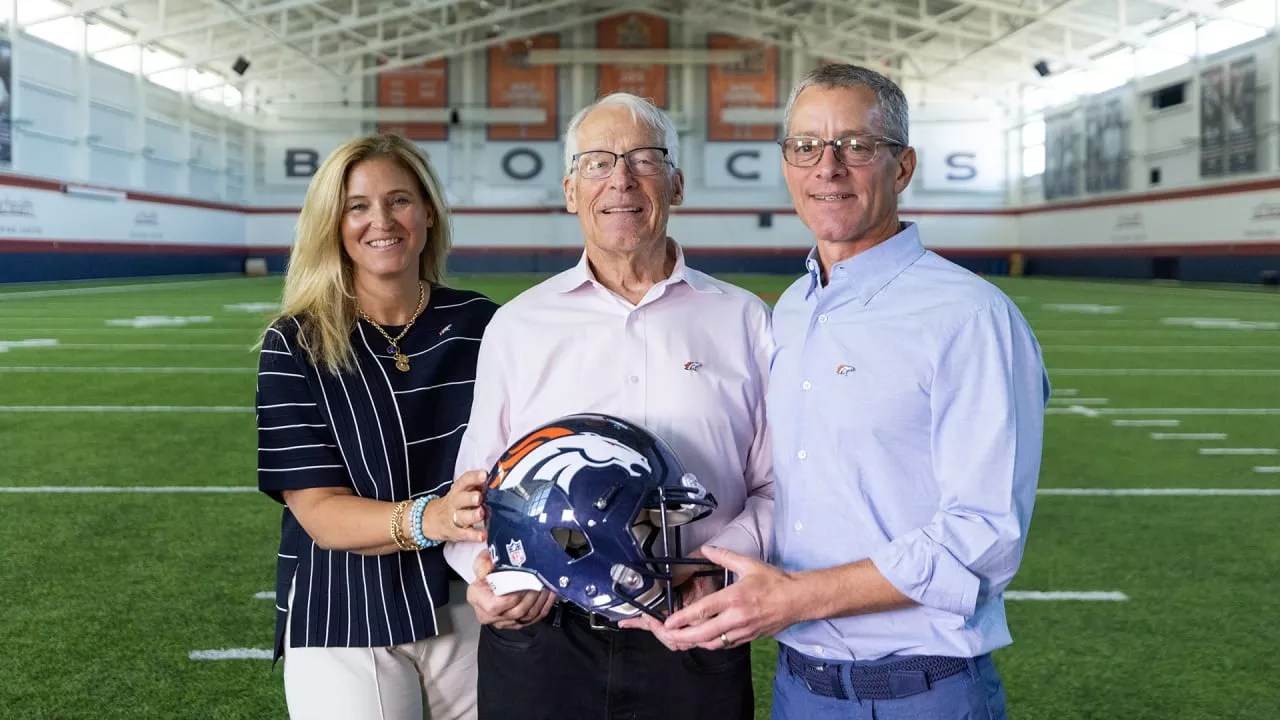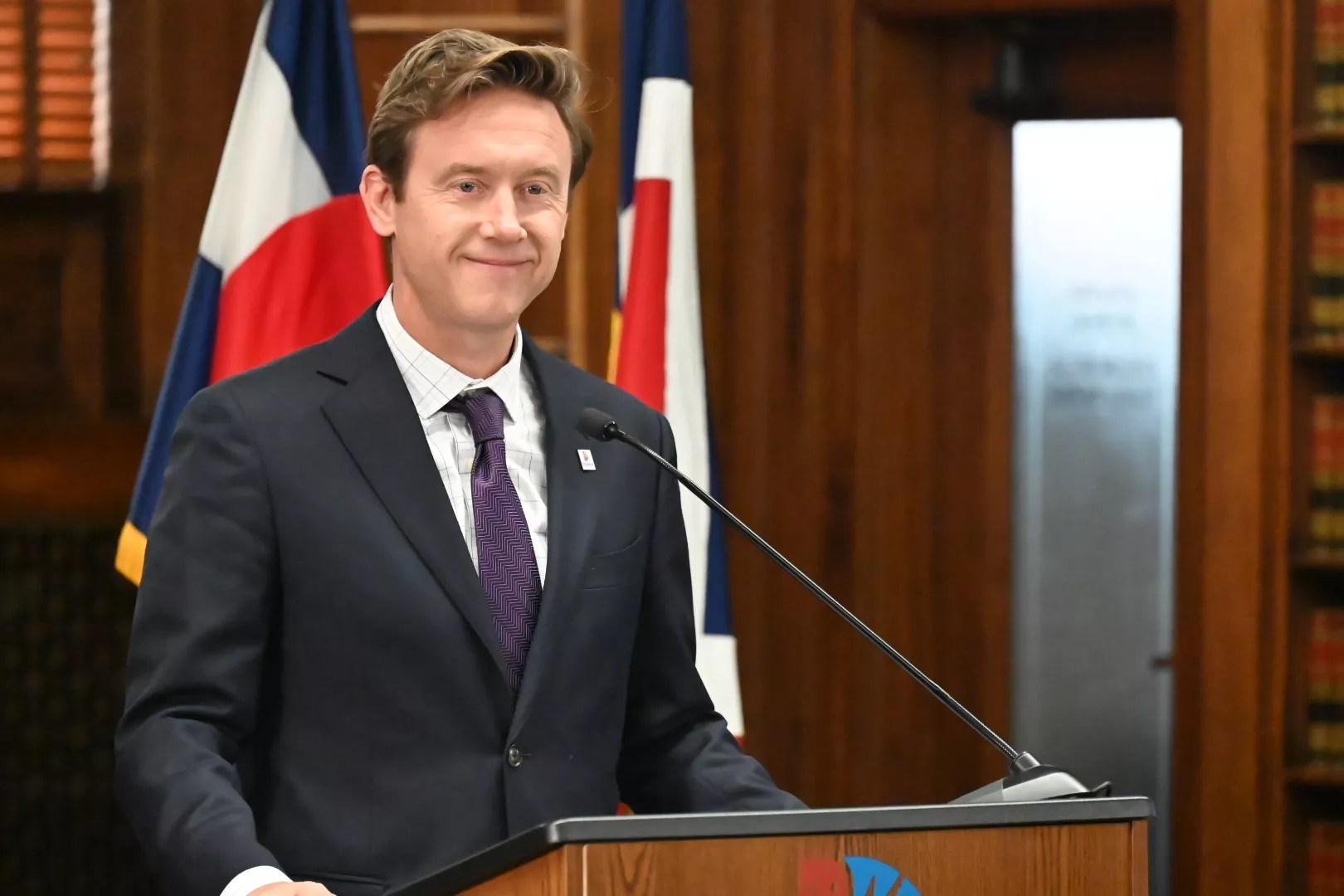
Denver Broncos

Audio By Carbonatix
With the Denver Broncos winning just eight NFL games since the Walton-led team of new owners bought it last summer for $4.65 billion, it’s unclear when the crew will actually start to see the fruits of its investment.
Pretty soon, though, there will be 4,000 happy Denver students who get to reap the benefits of that purchase. City officials recently unveiled My Spark Denver, a program that will give $1,000 to middle-schoolers to pursue out-of-school activities, and is partially funded by revenue that the city got from the Broncos sale.
A provision in the 1998 lease and management agreement between the Metropolitan Football Stadium District (MFSD) and Stadium Management Company – a subsidiary of the Denver Broncos – specified that in the case of a sale, at least 2 percent of the profit (and a minimum of $1 million) would go to members of the MFSD for youth activities.
The City and County of Denver is one of over forty metro-area municipalities that got money, cashing in the largest check of them all at over $12 million. It has big plans for the dough, with the most visible example yet being My Spark, which was originally pushed by Gary Community Ventures, the philanthropy group focused on children’s wellness where Mike Johnston worked before he became mayor.
“If these dollars are meant to target high-quality youth programming, it’s the perfect chance for us to make sure that this gets to the kids who need it the most and lets them choose the passions that excite them the most,” Johnston tells Westword. “We’re excited to have the Broncos revenue be part of the solution here.”
The MFSD hired an independent auditor to calculate the amount that each municipality would get of the $41 million that was set aside for youth funds in the sale. It worked with the state Department of Revenue to determine how much each entity had paid into the MFSD through a one-tenth of 1 percent sales tax between 2001 and 2011; that tax was originally approved by voters in 1990 to build Coors Field, then extended through 2011 to finance the construction of what is now Empower Field at Mile High.
The only stipulation is that the funds must go toward youth activities.
Some municipalities are pouring cash into building accessible playgrounds or improving youth recreation centers. In Golden, the city plans to renovate its Ulysses Sports Complex, and downhill skateboarders are hoping some of the Broncos funding can go toward building a skate park there.
Denver, through the Office of Children’s Affairs (OCA), says it has plans for every dollar.
Most of the funds are in a high-interest-earning account in an effort to expand the reach of the millions, according to Melissa Janiszewski, executive director of the OCA. “We’re going to use the interest earnings from the funds and put money out to support the community,” she says. The hope is that by using this method, the funds will last over a decade.
Janiszewski recalls that outgoing mayor Michael Hancock wanted to set up the savings account, and that he directed some of the funds to be distributed in 2023 during the transition from his administration to Johnston’s. So the OCA put out a request for proposals to local nonprofits to apply for funding; it received 74 applications totaling $6.8 million, and is currently deciding which projects will receive the $1.2 million it plans to disburse.
“It just tells you about some of the growing needs of the city when it comes to children and youth programming,” Janiszewski says. “We got a huge amount of applications.”
The OCA, for instance, is giving $200,000 to Chance Sports – a local scholarship fund for children to participate in youth athletics. After the $1 million it’s pouring into My Spark, there’s about $10.1 million left in the savings account. The OCA plans to ask for proposals each year to decide what to do with the interest.
For now, the My Spark pilot is the most visible example of the Broncos funds in Denver.
“My Spark is really built on the belief that those kinds of after-school and summer learning and enrichment activities aren’t nice to have, but necessary to have,” says Angie McPhaul, director of youth success at Gary Community Ventures. “Middle- and high-income families can spend thousands of dollars – and are spending thousands of dollars a year – on these opportunities, and low-income families have much less they can spend.”
With My Spark, middle-schoolers who are eligible for free or reduced lunch and attend a Denver Public School can receive debit cards with $1,000 on them to spend on the fees for activities from sports to dance lessons to robotics. As long as the entity is a partner in the program, it’s fair game.
Gary Community Ventures and other partners originally brought the idea of My Spark forward as a statewide ballot measure in 2021 with Proposition 119, which proposed a 5 percent increase in marijuana sales taxes statewide to help fund a new out-of-school education program. When voters rejected that idea, it registered a Denver ballot measure proposing a 4.5 percent increase in recreational marijuana sales taxes to fund out-of-school learning programs for children in 2022.
The city pulled the idea from the ballot before the election after spending over $1.25 million between Proposition 119 and the Denver measure. Johnston says the evolution occurred because Gary Community Ventures realized that with 178 school districts in 64 counties, it would be far too complicated to roll it out statewide.
“When we worked on Proposition EE, which was the statewide preschool program, we realized how critical it was to already have the proof point of the Denver preschool program that we’ve been running for ten years,” Johnston says. “We knew how to make it work, and that really provided some assurance to providers and to community members.”

Denver Mayor Mike Johnston has long been a proponent of the youth program.
Bennito L. Kelty
The mayor hopes that My Spark Denver will be a model for other municipalities. Along with Gary Community Ventures, Mile High United Way is another nonprofit partner with My Spark, but the group did not reply to a request for comment.
When Hancock brought the idea to Janiszewski before his departure, she thought it was a perfect fit – since the OCA is currently working on out-of-school-time equity in the city – and found that building relationships with trusted adults who aren’t parents or teachers is very important for children.
The OCA also had some ideas to refine My Spark for Denver, tailoring what began as a much broader proposal to focus on middle-schoolers.
“If you think about the development of young people, it’s really when young people start to gain a little bit of independence to do their own thing a little bit more,” Janiszewski says. “A lot of times programs are just harder to find for that age group.”
Starting in August, the OCA and its nonprofit partners began rolling out My Spark as a pilot program that will aim to serve 4,000 of Denver’s 12,000 potentially eligible middle-schoolers. Any provider that meets insurance and safety requirements just needs to sign up to be one of the places that accepts My Spark funds. Students who receive money can search the My Spark Denver database to find what interests them. Being able to use a debit card for payments helps prevent stigma, because parents can pay like everyone else, Janiszewski says.
Along with the $1 million from the Broncos, Denver City Council approved $2.5 million from American Rescue Plan Act funding, and Gary Community Ventures supplemented the program with a $1 million financial contribution and $500,000 in-kind.
“One of the things we’re seeing more and more is that one of the biggest drivers of inequality right now is actually all of the learning that happens outside of the school day,” Johnston says. “We know that access is entirely driven by what you can afford to pay for. … We just really want to try to make sure that those opportunities are available equitably to kids of all backgrounds.”
Part of the funding is going to evaluators who will track the efficacy of the pilot to see how successful it is and propose ways it could be improved or expanded. McPhaul says the plan is to present that data to the city so it can explore ways to keep the program going after the pilot year.
Janiszewski encourages people to reach out if the program is missing an activity their child is interested in so the OCA can work to find a provider.
On October 27, Johnston held a kids’ town hall to officially launch My Spark. It made him miss being a school principal, he says, telling Westword he’s surprised by just how passionate students are about athletics, art, set design and writing. That’s what is so great about the program, he adds: Kids get to choose.
“What that reinforced for us is these are amazing young people who want to be able to, are hungry to, learn more and do more,” Johnston concludes. “They want to be able to have some voice in what that experience is, and this is a great chance for us to do that.”
Parents can apply for My Spark Denver at mysparkdenver.org.